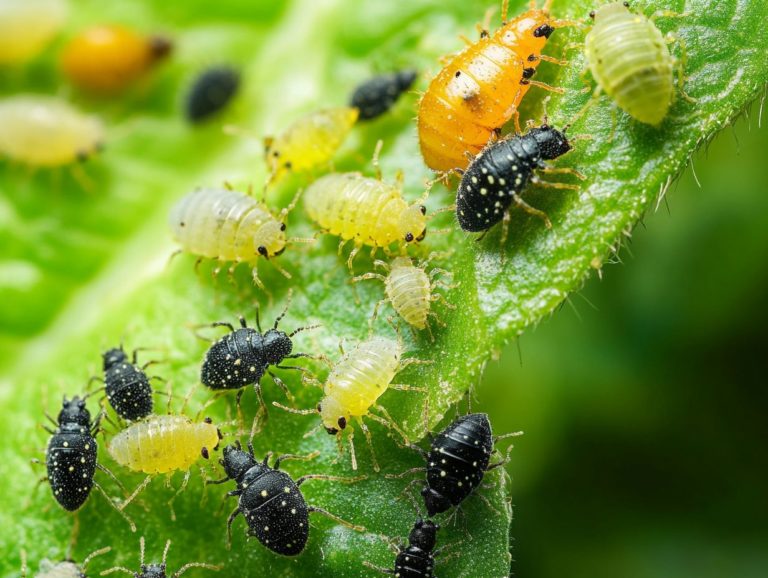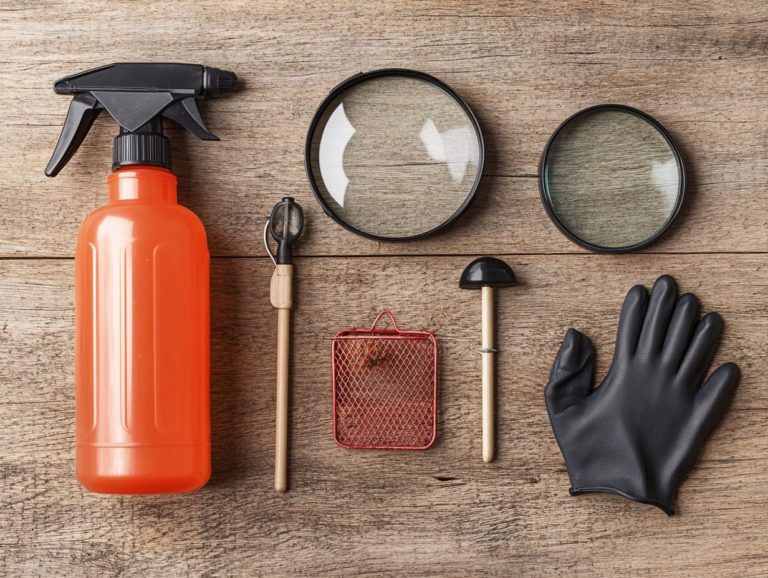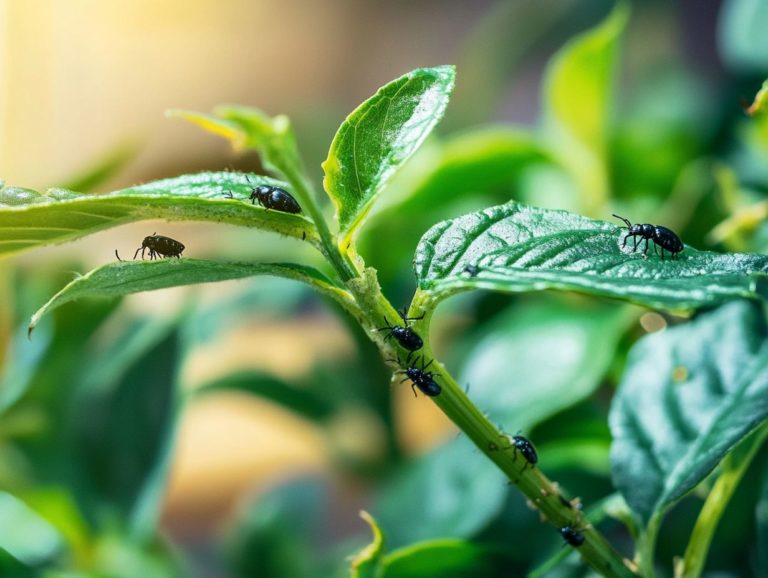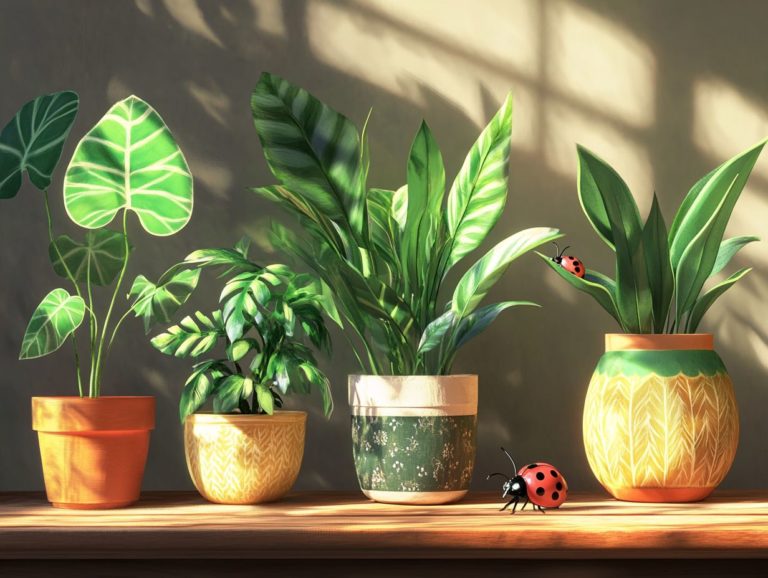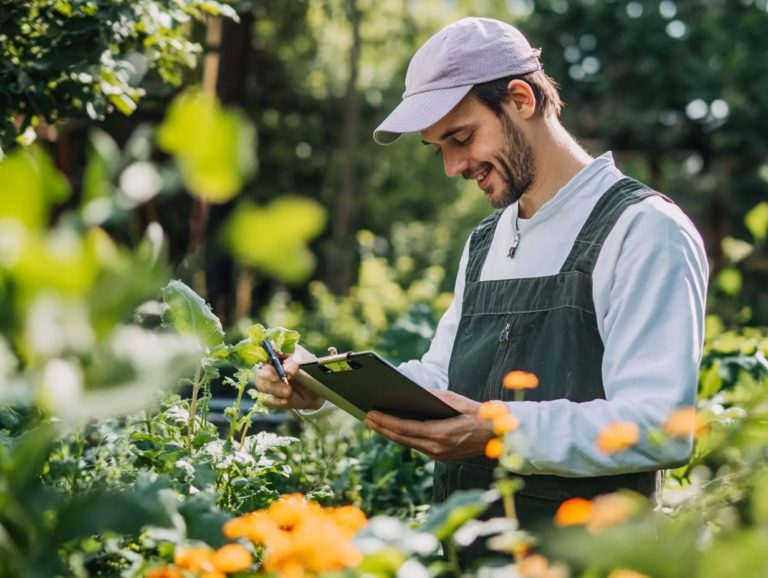Tips for Detecting Hidden Plant Pests
Hidden plant pests can quietly wreak havoc in your garden, often before you even realize they re present. Grasping the potential damage these intruders can cause is essential for nurturing healthy plants.
In this article, you ll discover the signs and symptoms of infestations, equipping you with the visual cues needed to catch trouble early. It covers common types of pests, effective ways to detect them, and practical strategies for prevention and management.
Staying informed helps you safeguard your plants and cultivate a thriving garden.
Contents
- Key Takeaways:
- The Importance of Detecting Hidden Plant Pests
- Signs and Symptoms of Plant Pests
- Common Types of Hidden Plant Pests
- Methods for Detecting Hidden Plant Pests
- Preventing and Managing Plant Pests
- Your Top Questions About Pest Control Answered!
- What are some common tips for detecting hidden plant pests?
- How can I use visual cues to identify hidden plant pests?
- Are there any tools or equipment that can aid in detecting hidden plant pests?
- What are some preventive measures I can take to avoid hidden plant pests?
- What should I do if I suspect my plant has a hidden pest infestation?
- Can hidden plant pests be harmful to humans?
Key Takeaways:
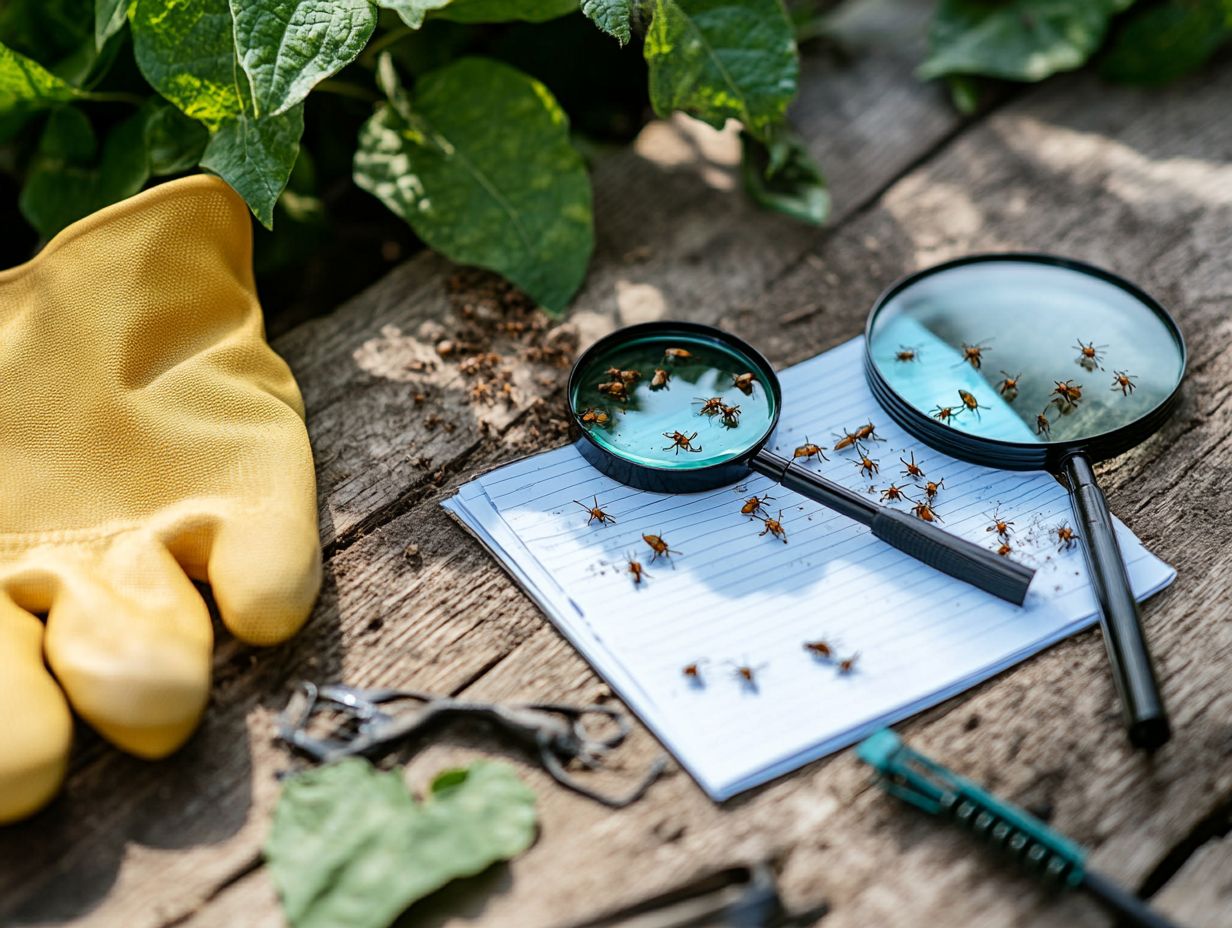
- Know the signs: Early detection helps prevent plant damage.
- Stay vigilant: Look for visual cues and changes in plant health for early intervention.
- Be prepared: Familiarize yourself with common hidden plant pests and how to manage them.
The Importance of Detecting Hidden Plant Pests
Detecting hidden plant pests is crucial for maintaining the health of your houseplants and cultivating a vibrant indoor environment. When you catch these pests early, you can use effective pest control methods that prevent infestations and protect your plants health while enhancing their growth.
Failing to recognize pest signs can lead to significant damage, affecting not only the beauty of your indoor plants but also your vegetable garden. Understanding pest detection is crucial for saving your plants from potential disaster!
Potential Damage and Impact on Plants
Pests like mealybugs, scale insects, and aphids can severely impact the health of your cherished houseplants and vegetable garden. These tiny invaders drain essential nutrients, leaving your plants weakened and vulnerable to diseases.
You might notice symptoms like yellowing leaves, stunted growth, or even a sticky honeydew that invites more pests. It’s not just about looks; infestations can also reduce the productivity of your vegetable garden, resulting in fewer fruits and vegetables than you hoped for.
Without proper care, ongoing pest management and natural techniques become essential to safeguard plant vitality and ensure your ecosystem thrives.
Signs and Symptoms of Plant Pests
Recognizing the signs and symptoms of plant pests is vital for effective pest control and timely intervention. Visual cues like yellowing leaves, webbing from spider mites, and sticky residue left by whiteflies can signal an infestation.
By promptly identifying these indicators, you can implement suitable pest management techniques, ensuring the ongoing health of your plants. Understanding these signs fosters a proactive approach to plant care in your home gardening efforts.
Visual Cues and Changes in Plant Health
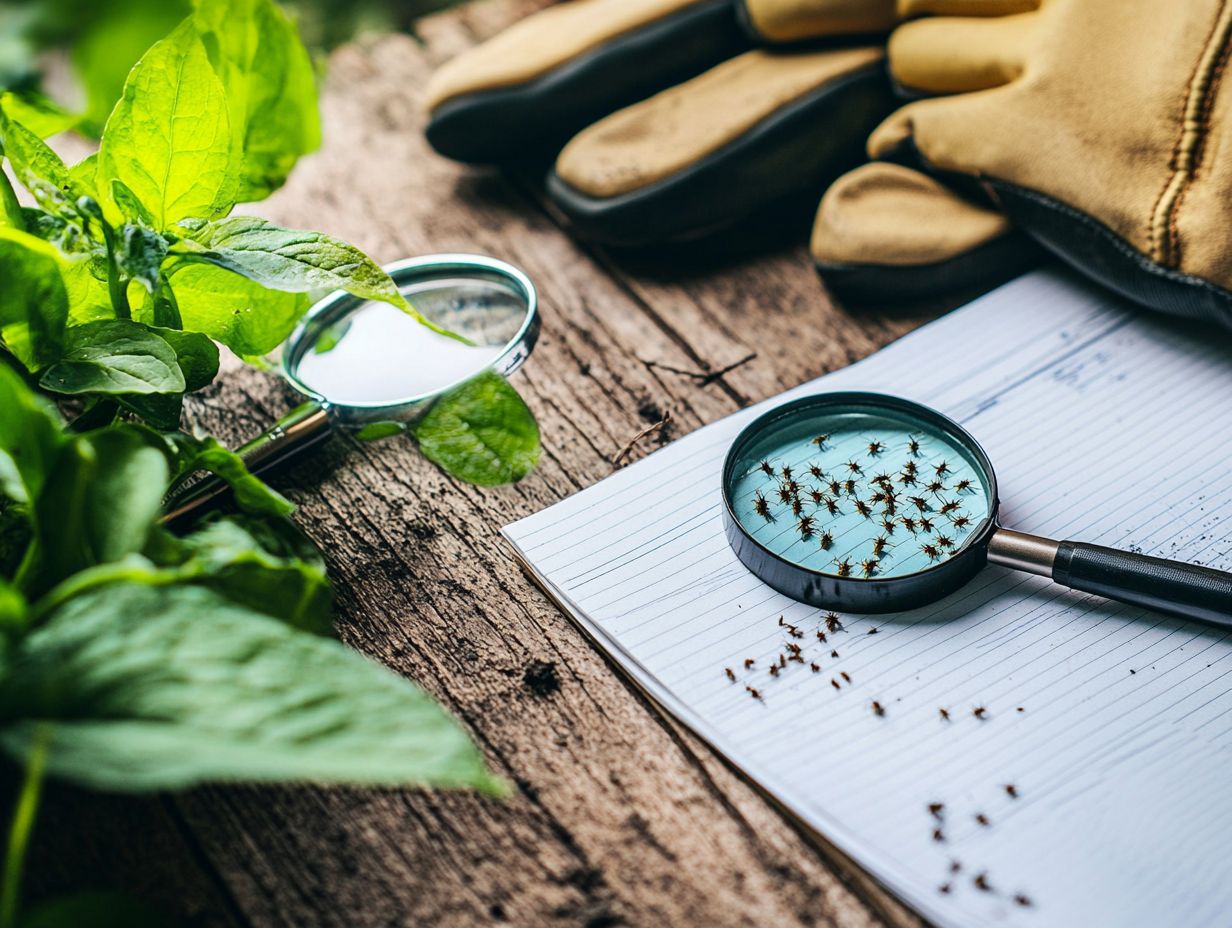
Visual cues such as distorted growth, leaf drop, and fungal infestations are critical indicators of declining plant health, often stemming from common pests like thrips and fungus gnats. These symptoms alert you that something is amiss with your plant s well-being.
For example, when thrips take up residence in a plant, you might notice silvery streaks and stippling on the leaves. This not only signals damage from their feeding but also hints at the potential for subsequent viral infections. Similarly, fungus gnats wreak havoc on the roots, leading to yellowing leaves and stunted growth.
By keenly observing these signs, you gain invaluable insight into pest activity, enabling timely interventions and enhancing your plant’s chances for recovery.
Check your garden today to ensure your plants are thriving!
Common Types of Hidden Plant Pests
Among the most common hidden plant pests that can wreak havoc on your cherished houseplants are mealybugs, scale insects, aphids, spider mites, whiteflies, and thrips. Each of these pests brings its own set of challenges to plant health.
Grasping their unique characteristics and behaviors is vital for effective pest management. These nuisances often remain undetected until they’ve caused substantial damage. Educating yourself on their identification is crucial for any gardener.
By recognizing the specific traits of these common pests, you can confidently implement targeted pest control measures that safeguard both your indoor and outdoor plants.
Description and Behavior of Pests
Mealybugs, aphids, spider mites, whiteflies, and scale insects each possess unique behaviors and characteristics that can greatly affect the health of your plants.
These pests are notorious for their distinctive feeding habits. They extract vital nutrients from host plants, causing stunted growth and overall decline. For instance, aphids and mealybugs multiply rapidly, with females giving birth to live young instead of laying eggs, leading to an infestation that can explode within days.
Have you noticed yellowing leaves? This could be a sign of pest trouble! You might also see sticky honeydew residue and a general decline in vigor. Learning to recognize these specific indicators allows you to take proactive steps against infestations before they escalate.
Methods for Detecting Hidden Plant Pests
Discovering hidden plant pests is key to keeping your plants healthy and thriving! Employing effective methods is essential for maintaining the health of your houseplants and ensuring the successful growth of your vegetable garden.
Utilizing a variety of tools and techniques think visual inspections, sticky traps, and magnifying glasses can significantly enhance your ability to spot potential infestations early on, especially for spider mites and mealybugs.
By integrating these practices into your gardening routine, you not only improve pest detection but also bolster your broader infestation prevention strategies.
Understanding how to recognize pests like mealybugs and spider mites will enable you to take proactive measures against these threats to plant health.
Tools and Techniques for Identification
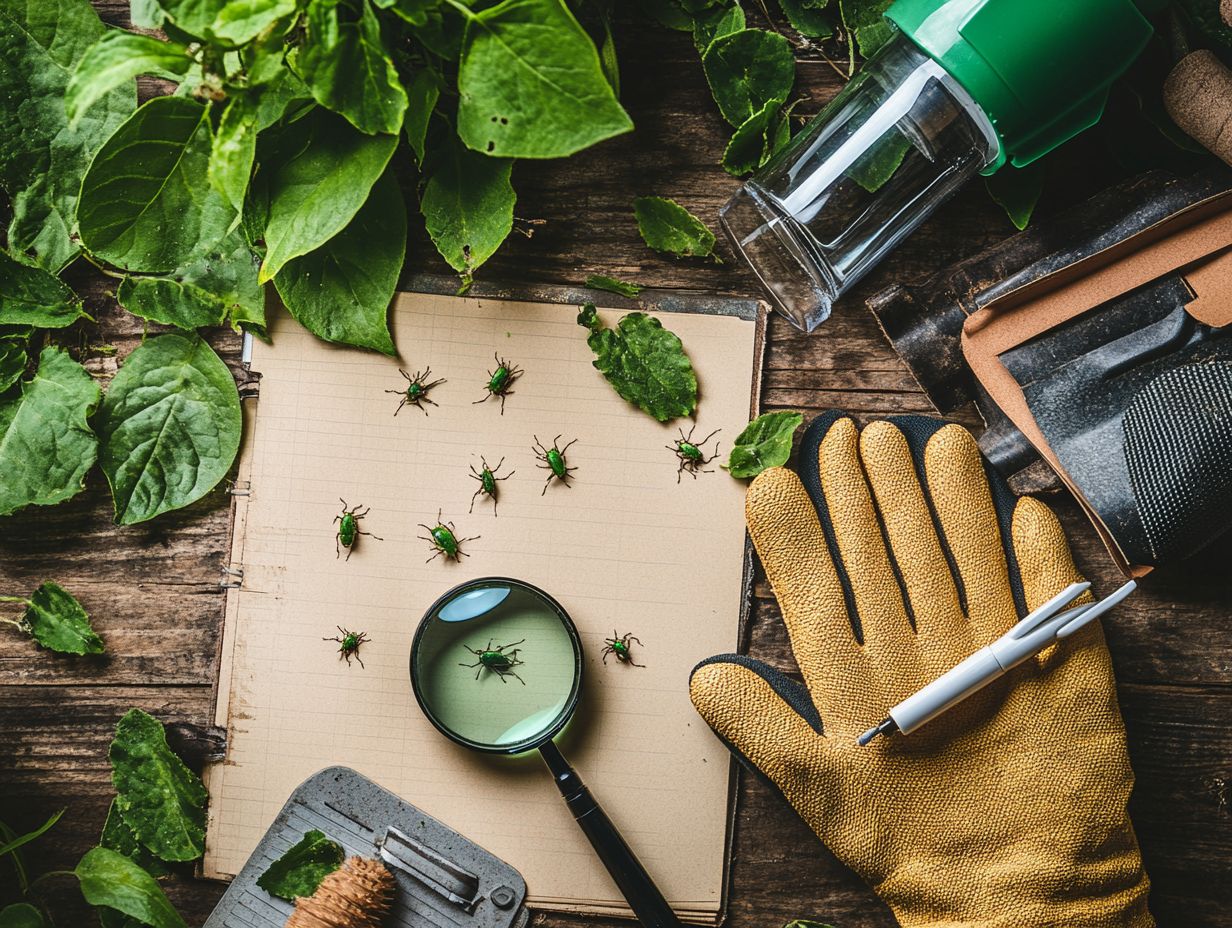
Utilizing the right tools and techniques for pest identification can dramatically elevate your ability to manage pests effectively in your indoor plants and vegetable garden.
By using resources like magnifying lenses, you can closely observe the nuances of pest behavior. Soil moisture sensors allow you to assess the health conditions of your plants. This proactive approach enables you to tackle infestations before they become overwhelming.
Techniques like companion planting, which means growing certain plants together to naturally keep pests away, serve as powerful deterrents against harmful insects. In addition, incorporating natural remedies like neem oil enhances your pest control efforts.
By embracing this diverse array of methods, you not only cultivate a healthier garden environment but also take proactive steps against unwelcome invaders.
Preventing and Managing Plant Pests
Preventing and managing plant pests is crucial for the long-term health of your houseplants and vegetable garden. This ensures they flourish in a pest-free environment.
Employing combined pest control methods and leveraging natural techniques can significantly reduce the risk of infestations while championing sustainable plant care.
Strategies like regular monitoring, maintaining proper sanitation, and embracing organic farming practices not only help control pest populations but also bolster overall plant resilience.
Recognizing the significance of these pest control methods enables you to cultivate a harmonious ecosystem that nurtures healthy growth. Act now to protect your plants!
Effective Pest Control Strategies
Using effective pest control methods is essential for maintaining healthy indoor plants and cultivating a flourishing vegetable garden, especially when you choose to utilize natural techniques and organic farming practices like the use of neem oil.
By adopting methods like neem oil application, you can effectively deter common pests while preserving the delicate balance of your garden’s ecosystem. This organic solution disrupts the life cycle of insects without harming beneficial species, such as ladybugs, that help control pest populations.
Another approach worth considering is companion planting. This technique involves growing specific plants together to naturally repel pests or attract helpful insects. Integrating barriers like row covers serves as a physical shield against pests.
Discovering the best mix of these strategies can transform your garden! Not only do they enhance your ability to combat pests, but they also promote overall plant health and soil vitality, leading to a truly thriving garden environment.
Learn more about effective pest control methods in our video!
Your Top Questions About Pest Control Answered!
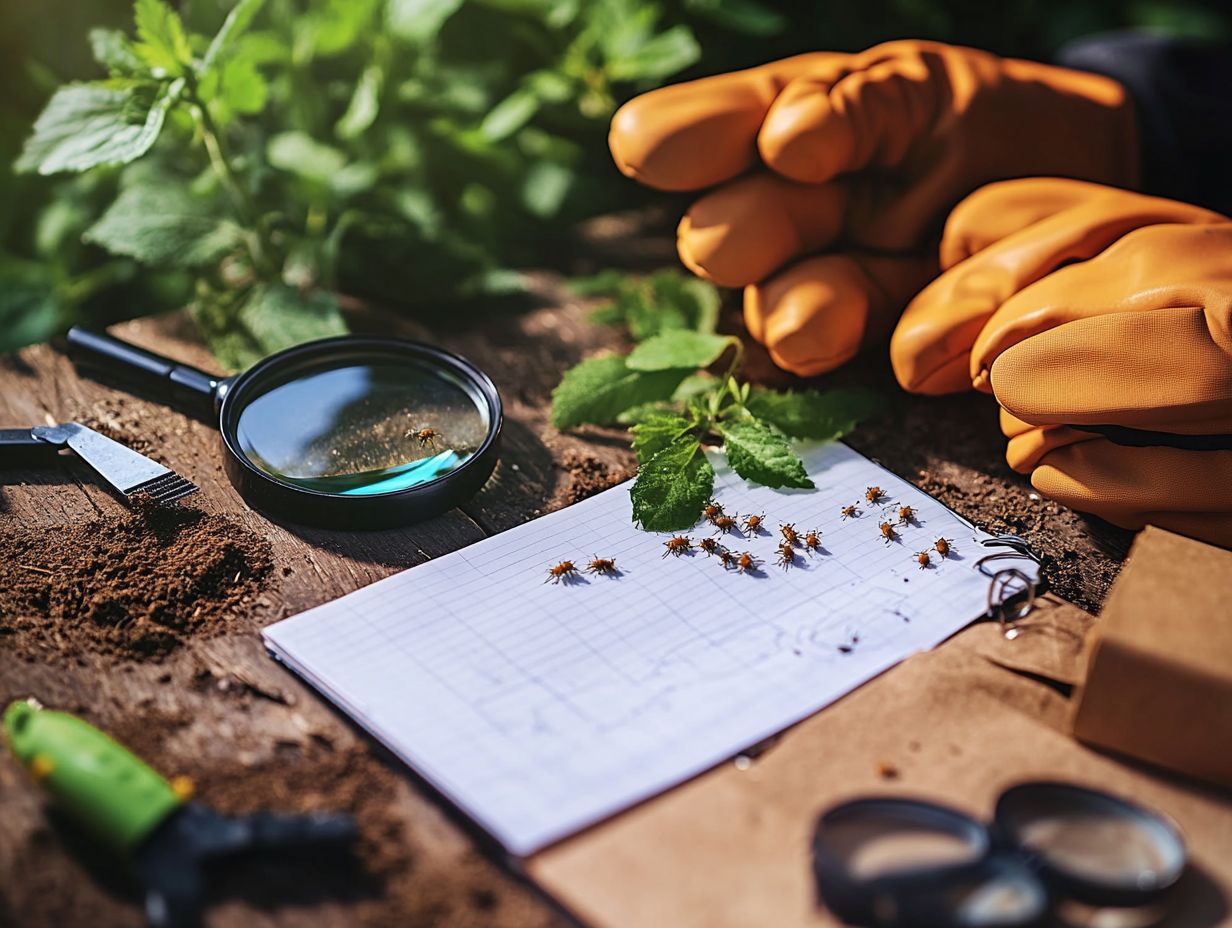
- Regularly inspect plants for signs of damage or illness.
- Check for pests in hard-to-reach areas, like under leaves and in the soil.
- Use natural pest control methods to prevent infestations.
Visual cues such as wilted or discolored leaves, stunted growth, or webbing on plants can be indicators of hidden plant pests. These signs should not be ignored; they should prompt further inspection.
Yes! There are tools specifically designed for detecting hidden plant pests, such as:
- Magnifying glasses
- Sticky traps
- Blacklights
These can help you identify and monitor pests in your plants.
- Practice good hygiene in your garden.
- Rotate plants to avoid pest build-up.
- Keep plants healthy and well-nourished to increase their natural resistance to pests.
If you suspect your plant has a hidden pest infestation, isolate it from other plants and thoroughly inspect it. You can also try using natural pest control methods or consult a professional for assistance.
While hidden plant pests can cause damage to plants, they are generally not harmful to humans. However, certain pests can cause skin irritation or allergic reactions, so it is important to handle them carefully when inspecting or removing them from plants.
Check your plants today to keep them healthy!

